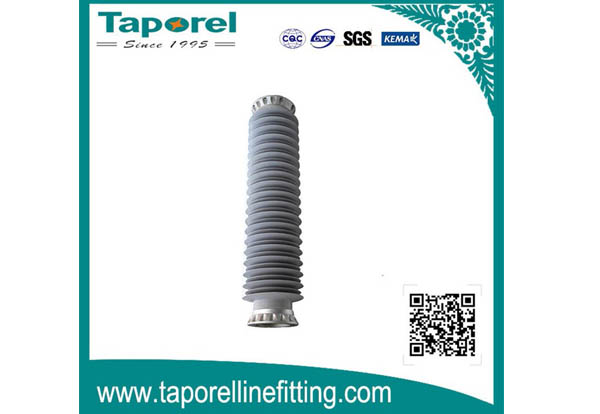The use of silicone composite insulators has increased significantly over the last 30 years. One of the key factors behind the continued growth of electricity will be the confidence shown by power companies. Professors Liang Xidong and Yan Zhipeng of Tsinghua University in Beijing discuss key issues and suggest that some existing IEC test methods and technical standards may need to be modified.
They also reviewed the test methods used in China - the largest market for these insulators. In addition, due to different operating conditions, they explain that specific technical requirements may need to be developed for different types of composite insulators, especially substation insulators.
China's power industry has experienced rapid growth since the 1980s, with a surge in power generation and the length of the country's overhead network with the recent development of extra-high voltage AC and extra-high voltage DC lines.

Composite Hollow Insulator
The growth of insulators cannot be viewed separately from the overall growth of the electric power industry. For example, the rapid growth in overhead line lengths and the shift to higher voltage levels have not only brought about a huge increase in demand for insulators but have also placed new and higher demands on their performance.
Silicone rubber composite insulators have achieved significant growth in China due to their excellent wet and foul flash performance, lightweight, high strength-to-weight ratio, ease of transportation and installation, and resistance to man-made damage.
During this period, State Grid purchased 34.1 million porcelain insulators, 25.3 million glass insulators, and approximately 5.13 million strings of silicone composite insulators. If we convert the number of strings for direct comparison, the porcelain strings are about 2.48 million and the glass strings are about 1.85 million.
Therefore, the percentage of purchased porcelain, glass, and composite insulator strings is 26%, 20%, and 54%, respectively. In addition, among the newly installed insulators, the number of composite insulator strings is more than the other two types of strings combined. This confirms that China has become the first country to dominate UHV and EHV overhead lines with silicone rubber insulators.
Composite insulators have also achieved a significant increase in use worldwide and, based on test applications, now dominate all EHV lines. In addition, significant improvements have been made in both manufacturing and testing. Nevertheless, given the rapid development of the technology, the key issue for the future of composite insulators is for utilities to maintain confidence in their expected service life and performance.
This means that the future development of composite insulators will depend on: the availability of suitable test methods to verify long-term performance; the development of different requirements for power station insulators; and the development of the best materials and maintenance techniques.
If you want to know about the wholesale best composite insulator price, welcome to contact us.
Taporel Electrical Insulation Technology Co., Ltd.
+86 29 8603 0621
No. 209 Jincheng Road, Jintan District, Changzhou City, Jiangsu Province, China
Copyright © Taporel Electrical Insulation Technology Co., Ltd. All Rights Reserved | Sitemap
